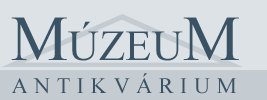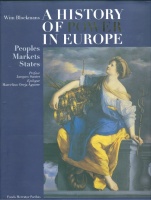categories
- Traffic and Vehicles Catalogue
- socreal.catalog
- Advertisement Catalogue
- Photo Catalogue
- Chinese and Japanese Catalogue
- New Holy Card Catalogue II.
- 12 interesting old books
 Books
Books
 Bibliophil
Bibliophil
 Antiques
Antiques
 Engraving
Engraving
 Maps
Maps
 Photos
Photos
 Antique Papers, Small Prints
Antique Papers, Small Prints
 Posters
Posters
- Circus
- Modern Graphics
- Socialist Realism
- NER Propaganda
- Others
cart
Cart is empty
You've not logged in
Blockmans, Wim : A History of Power in Europe
- description
- additional information
Moving from the time when nation-states first appeared in Europe, around A.D. 1000, through the Crusades and the Renaissance, wars, annexations, revolutions, and the rise of new forms of government, this broad and ambitious study offers a provocative and original perspective on the exercise of power and its effects.... Wim Blockmans investigates the exercise of power in European society through detailed analysis of three broad fields; politics, economics, and culture. The more these three areas overlap, he argues, the more absolute is the power. Thus, the movement of populations, the relationship of religions to secular powers, the arts of cities, courts, and villages all fall under his scrutiny. For most of this millennium visual representations have been rulers' and governments' key tools of persuasion. Here, more than 350 illustrations - paintings, engravings, reliquaries, frescoes, illuminated manuscripts, tapestries, genealogical charts, maps, coins, even chess pieces - brilliantly illuminate Blockmans's thesis. Works by artists as diverse as Giorgio Vasari, Rembrandt, Albrecht Durer, El Greco, Edvard Munch, and Paul Gauguin depicting subjects as varied as religious allegories, portraits of the Medici family, witch trials in sixteenth-century Germany, religious extremism in Northern Ireland, Stalinist architecture, naval battles, and more converge to present a complete picture of European power structures and struggles over the last thousand years.
| condition: |      |
| category: | Books > Foreign Language Books > Books in English > |
| category: | Books > History > Universal history > |
| category: | Books > History > > |
| publisher: | Fonds Mercator Paribas, 1997 |
| item number / ISBN: | 0018859 |
| binding: | cloth bound (in original dust jacket) |
| pages: | 402 |
| language: | English |









 Telefon:
Telefon: E-mail:
E-mail:







